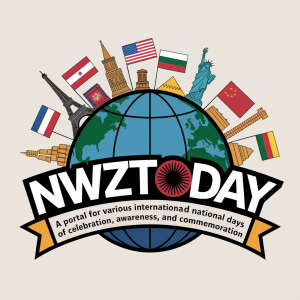Every year on October 13, the world comes together to observe the International Day for Disaster Risk Reduction (IDDRR). This important day serves as a reminder of the collective responsibility we share in reducing the risks and impacts of disasters. But why exactly is this day celebrated, and what makes it so significant? Let’s dive in!
The History Behind IDDRR
The International Day for Disaster Risk Reduction was first established by the United Nations General Assembly in 1989. The idea was to promote a global culture of disaster awareness, prevention, and mitigation. Over the years, this day has become a platform to highlight the critical need for reducing vulnerabilities and improving resilience, especially in the face of climate change and natural hazards.
Each year, the day is guided by a specific theme that aligns with the Sendai Framework for Disaster Risk Reduction (2015-2030)—a global agreement aimed at reducing disaster risks and losses. These themes emphasize actionable goals, such as enhancing early warning systems, improving infrastructure, or fostering inclusive policies to protect vulnerable communities.
Why Is Disaster Risk Reduction Important?
Disasters—whether natural or human-made—have devastating effects on lives, livelihoods, and economies. From earthquakes and hurricanes to wildfires and floods, these events can strike at any time, leaving a trail of destruction in their wake. But here’s the good news: much of this damage can be prevented or minimized through effective disaster risk reduction strategies!
By investing in disaster preparedness, early warning systems, and resilient infrastructure, we can save countless lives and reduce economic losses. Moreover, disaster risk reduction plays a vital role in achieving global sustainability goals, as it helps protect progress in areas like health, education, and poverty alleviation.
How Is IDDRR Celebrated?
The International Day for Disaster Risk Reduction is marked by a wide range of activities across the globe. These include:
- Educational Campaigns: Schools, universities, and community organizations host workshops, seminars, and training sessions on disaster preparedness.
- Public Awareness Drives: Governments and NGOs launch initiatives to inform citizens about the risks in their regions and how to stay safe.
- Policy Advocacy: Leaders and policymakers use this day to emphasize the importance of integrating disaster risk reduction into national and local development plans.
- Community Drills: Simulated disaster response exercises help communities test their readiness and improve their emergency response capabilities.
Fun Facts About Disaster Risk Reduction
- The Sendai Framework aims to substantially reduce disaster-related deaths and economic losses by 2030.
- Studies show that every $1 invested in disaster preparedness can save up to $7 in disaster response and recovery.
- Countries like Japan and New Zealand are global leaders in disaster risk reduction, thanks to their advanced early warning systems and resilient infrastructure.
Your Call to Action
Now that you know the significance of the International Day for Disaster Risk Reduction, it’s time to take action! Here are a few ways you can contribute:
- Learn about the disaster risks in your area and create a family emergency plan.
- Support organizations working on disaster preparedness and recovery initiatives.
- Advocate for stronger disaster risk reduction policies in your community.
Remember, disaster risk reduction is a shared responsibility. By working together, we can build a safer, more resilient world for everyone. Let’s make this October 13 a day to reflect, learn, and act!









